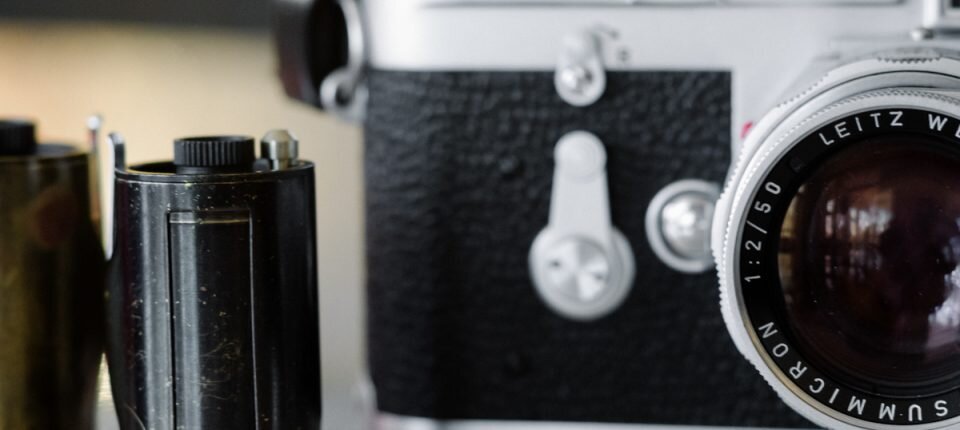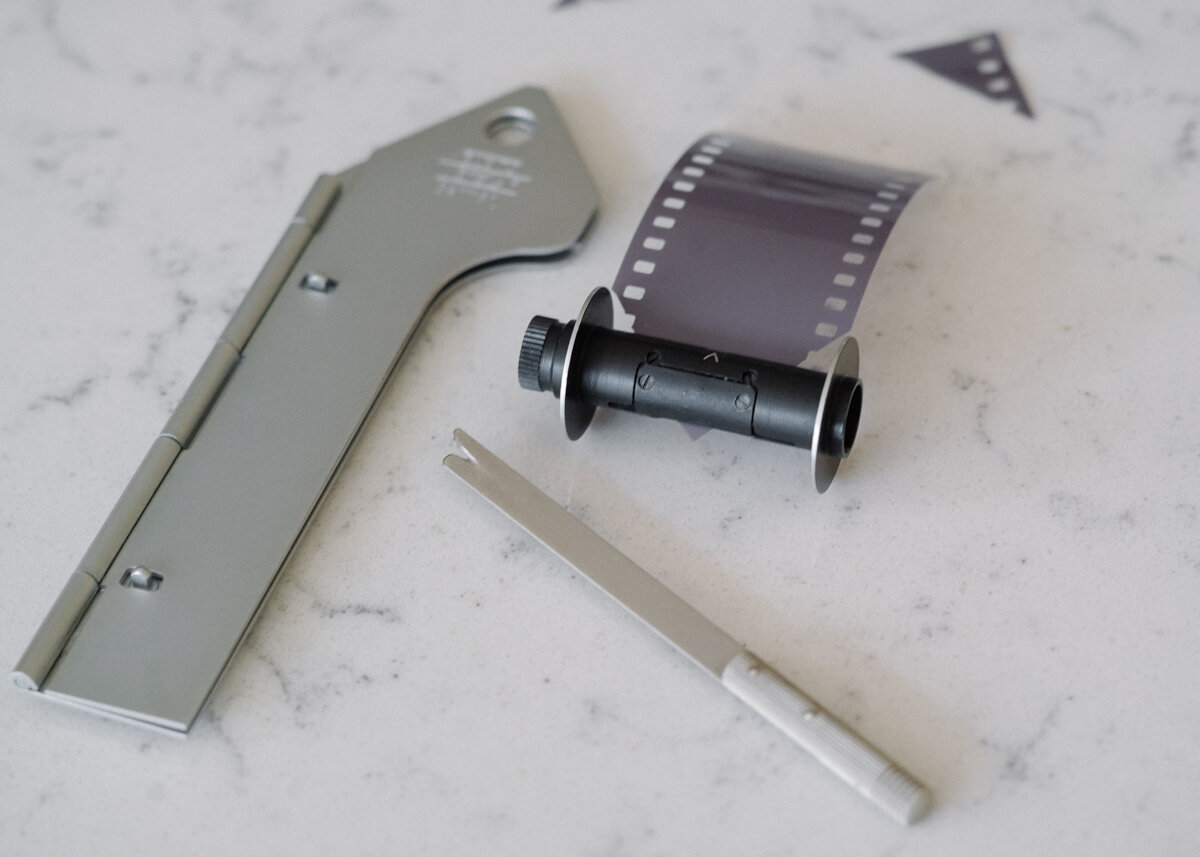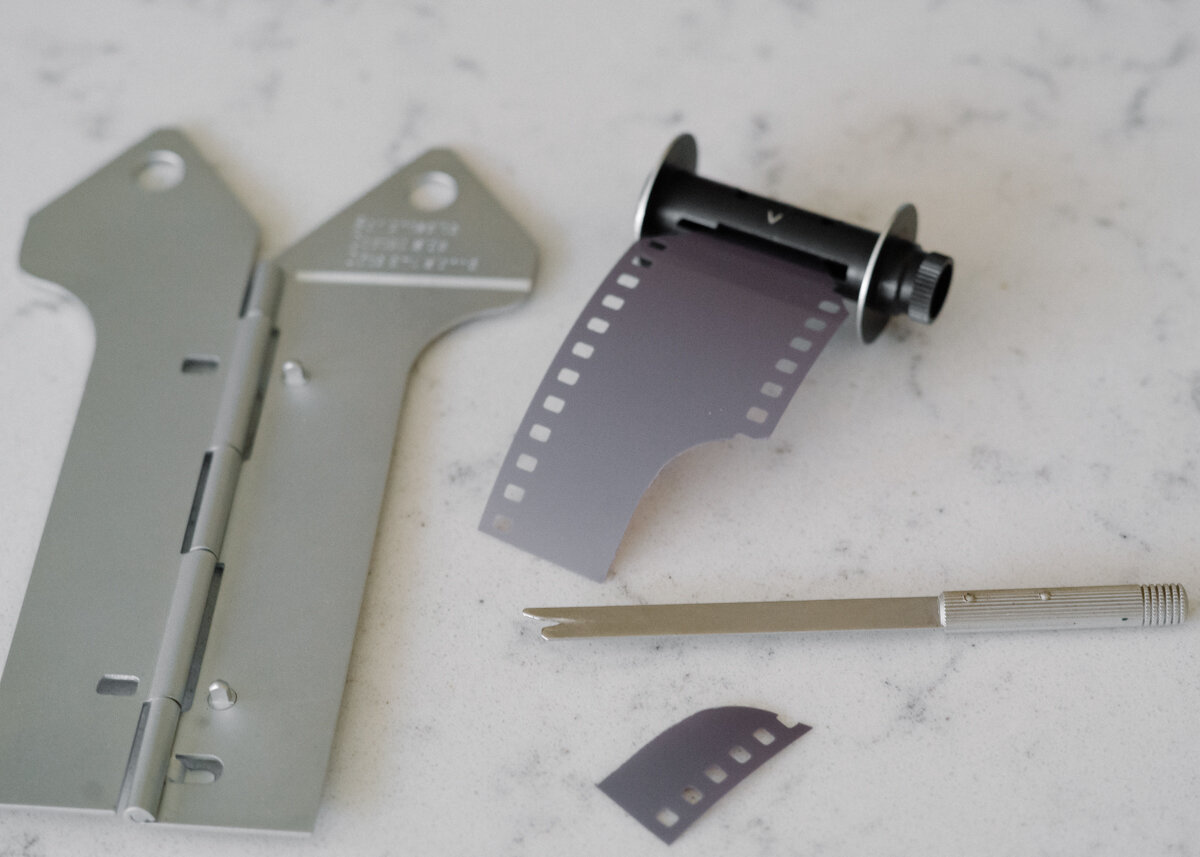IXMOO: Leica IXMOO Variations- Brass Reloadable Cartridges
Ask anyone that enjoys shooting photographs with a Leica, and I'll bet they know what a Leica M3 is. But, would they know what a Leica IXMOO is and would they know about the different variations in the IXMOO? Maybe not. I have been shooting film for decades and reloading film just as long. I enjoy using the Leica M3 and M2 series as well as a Leica IIIC. One item shared by all these Leica cameras is the ability to use a specific German made brass reloadable cartridge. Jim Lager tells me the line of reloadable gear manufactured by Leitz is long, including the likes of the FILCA, ABLON, ABCOO, ASPUL, AGRIF, AFLOO, and KBOOF. This articles focuses on the end of that line -- the IXMOO.
I have been using IXMOO for about 5 years with a Leica M3 (and previously an M2). Clearly, reloading film takes time and care and is not for everyone. As Leica developed the M series and 35mm photography became more popular with the addition of non-professionals, pre-loaded single use cartridges also became more popular. From the mid-1950's when he began using 35mm, Jim Lager tells me he never met a Leica user who employed the FILCA or the IXMOO. So, while lesser known, these superbly engineered cartridges add not only to the nostalgia of using older film Leicas today but also contribute to the cohesiveness and functionality of a Leica / Leitz camera system.
Just like the attention to detail and workmanship in a Leica film camera, the brass reloadable cartridges share the same lineage. Many vintage era Leica items, including various types of the brass cartridge, carry an all caps name that seems to have no bearing on what the item is (think, ABCOO, AFLOO and KBOOF). The brass reloadable cartridges shown here are called IXMOO, not be confused with the older and taller FILCA cartridges that only fit the pre-Leica M3 series with screw mount lenses, like my Leica IIIC. While these screw mount bodies take either cartridge, the M bodies can only use the IXMOO. You can tell the IXMOO from the FILCA by the little knob on the top of the cartridge. If it is chrome, the cartridge is probably an IXMOO, black and its a FILCA. Side by side, of course, the FILCA is taller and the FILCA cartridge do not carry the full text on the bottom - "Ernst Leitz GmbH Wetzlar." (image 1)
The Leica M3 right on up through the very early M6 can use this cartridge. The later models, including the Leica MP and Leica MA will not allow the IXMOO to be inserted. A tab has been added preventing the use of the cartridge and the bottom plate no longer has the notch required to unlock the IXMOO allowing it to be opened inside the camera body after the bottom plate is attached. This is presumably to standardize the manufacturing process for bottom plates and latches as technology changed and the inside of the Leica bodies was adjusted to maintain the size. Additionally, Leica would no longer have to keep the IXMOO in production. Andrew Nemeth also points out that the Leica M7 and MP film cartridge cavities are too small to even load the IXMOO, regardless of the tabs.
Typically, a cartridge that has not been in continual use has some brass oxidation on the bottom. One day, after going through and cleaning up several cartridges, I notice some differences between them. Upon closer inspection, the differences are more pronounced, but difficult to notice. The best that I can tell, there are three variations of the IXMOO cartridge, and two variations of the spools inside the cartridge. First, the outside of the IXMOO. Notice that two of the cartridges have black tabs and one has a chrome tab. This is regardless of the age or condition of the IXMOO. These are the only two out of 30 IXMOO that I have with black tabs. The newer ones seemed to have chrome tabs, so I believe the older cartridges had the black tab. (image 2)
Second, look at the bottom of the IXMOO. All three share the same writing, but notice the one in the middle does not have the little tab bumped out on the bottom rim. Instead it is a complete circle with a round knob. The two on the ends are the same, but one has a black tab and one does not. The inside of the cartridge at the bottom mirrors the same – the one in the middle is a complete circle without the round bump. (images 3 & 4)\
3. Different IXMOO Bottoms
4. Inside the IXMOO
There are two types of spools used in the IXMOO. A black spool is most common and the grey spool, while less common, appears to be the latest version of the spool before Leica stopped production of the IXMOO. The spools are similar in function but have two remarkable differences. First, the black cartridge has screws that remove a section of the spool to repair or replace the spring mechanism contained inside. The grey spool has two screws, but no easy way to get inside and reach the mechanism. While I can only guess, I assume that the system to hold the film is more of a component in the grey spool and can be replaced by sliding it out and putting an entirely new assembly in, held by the screws. An important difference for me has been the thicker and deeper notch in the bottom of the grey spools. Some bulk film reloaders have not ben able to grasp this notch and turn the spool to load film. This was surprising, but if you compare the bottoms, the grey spool notch is clearly thicker. (images 5 & 6)
5. IXMOO Spool Variations
6. Change in IXMOO Spring Cover
There are two canisters I have seen with the IXMOO. The metal canister appears to be more scarce and older. It is made from aluminum and has Leica molded in relief on the cap. There is no padding and the top is held on by friction. I like these canisters as they appear durable and I have not had trouble with the lids coming off. The second type of canister is a black bakelite canister. These canisters came new with a foam bottom, but most used IXMOO with Bakelite canisters have long lost the foam. The top of the canister screws on and has a white dot that can be written on with pencil and erased and reused. The foam in the bottom appears to be why many of the used canisters have brass oxidation on the bottoms. After long and sometimes damp storage, the cartridge will need cleaned with brass cleaner. Try not to clean the insert and only clean what is necessary. Bright surfaces reflect light, which is exactly what we do not want inside the camera. (images 7 & 8)
7. Metal IXMOO Container
8. Bakelight IXMOO Container
I have a few IXMOO that are in the box, still new and unused. They are part number 14006J, which are the only new in the box IXMOO I have seen. These come with Bakelite canisters, many still with white foam in the bottom and grey spools. Curiously, even the new ones have an arched scratch from the tab to the bottom of the spool. However, looking at all of the old and well used cartridges, they all seem to have this scratch. My best guess is that this is a quality control scratch so that the user knows it has been tested and will work, keeping the film safe from light and properly opening and closing inside the camera. Jim Lager corrected me and pointed out that the scratch, while part of the manufacturing process, indicates how the leader is to be cut. This makes perfect sense as the cartridge is used upside down and the leader has to be on the proper side to load in the camera body.(images 9 & 10)
9. Curious Universal IXMOO Scratch
10. New IXMOO in the Box
The tab is probably the most critical part of the IXMOO. When inserted inside the camera, a notch on the bottom plate bends the tab out ever so slightly, which unlocks the insert so it can rotate open as the bottom plate is locked. This is a genius system as when you open the bottom plate it closes the cartridge, releasing the spring tension of the tab and locking the cartridge for removal. So, the most sensitive part of the IXMOO is the spring tab. If the tab is pulled back by hand too far, and loses its tension to spring back into the cartridge two things happen. First, the cartridge cannot be locked and kept light-safe. Second, the spring cannot be bent back so that it works again. My best advice? Do not pull the tab back too far or too hard. There is also a black felt ring glued in the top of the insert which helps the spool turn. I have seen some cartridges without the felt, but the felt is necessary. In part, the felt acts as a spacer keeping the spool at the proper location for film to enter and exit the cartridge. Do not buy an IXMOO without the felt unless you are good at glueing them back in.
Along with the alphabet accessories, the ABCOO and the ABLON are important tools for using the IXMOO. The ABLON is the template which helps cut the film and the ABCOO is the film cutting blade. To load an IXMOO (or a FILCA for that matter), the film is cut to a point. This is done at the top of the ABLON. The point is then inserted into the IXMOO where the arrow points. This is a one way journey for the film. Once inserted, it cannot back out, only go forward. So, if it is not centered properly, cut off the end and push it the rest of the way through. Then cut a new point in the film and try again. (image 11)
At the end of the film loading process, after the cartridge is closed and taken out of the bulk loader, a tab can be cut on the leader. The IXMOO needs a shorter tab typically, to load into the M3 or M2 take-up spool or into the rapid loading system that was available for the M3 and part of the M2R, M4 and early M6. If you are loading the FILCA, the older screw mount cameras needed a longer cut leader. This was due to the closed body with no door to position the film. The ABLON can be used for either a short or long leader. In fact, I use the ABLON to put leaders on my Kodak cartridge film for the MP and MA. Its a great addition whether or not you use the IXMOO. (image 12)
I love the brass cartridge. I love that it opens inside the camera body and allows the film to move without really touching anything. I really love the ease of loading the film without having to use tape to put it around the spool. If anyone finds other variations they want to share, I would love to hear about them!
As a sidenote, these images were shot with a Leica SL and the Macro-Elmar M 90mm f/4.0 with Leica M Macro Adapter.
At the end of the film loading process, after the cartridge is closed and taken out of the bulk loader, a tab can be cut on the leader. The IXMOO needs a shorter tab typically, to load into the M3 or M2 take-up spool or into the rapid loading system that was available for the M3 and part of the M2R, M4 and early M6. If you are loading the FILCA, the older screw mount cameras needed a longer cut leader. This was due to the closed body with no door to position the film. The ABLON can be used for either a short or long leader. In fact, I use the ABLON to put leaders on my Kodak cartridge film for the MP and MA. Its a great addition whether or not you use the IXMOO.
(image 12)
I love the brass cartridge. I love that it opens inside the camera body and allows the film to move without really touching anything. I really love the ease of loading the film without having to use tape to put it around the spool. If anyone finds other variations they want to share, I would love to hear about them!
As a sidenote, these images were shot with a Leica SL and the Macro-Elmar M 90mm f/4.0 with Leica M Macro Adapter.





